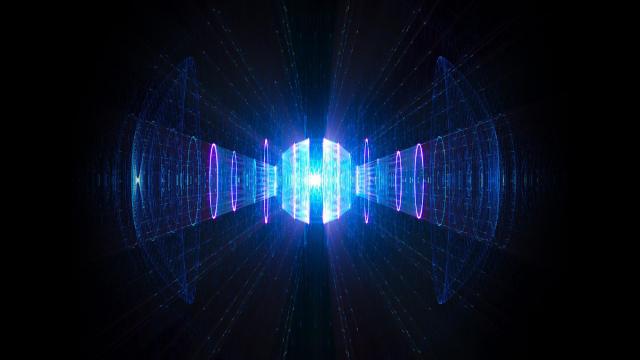How ‘Cosmic DNA’ Revealed Exoplanet Siblings Raised In The Same Nursery
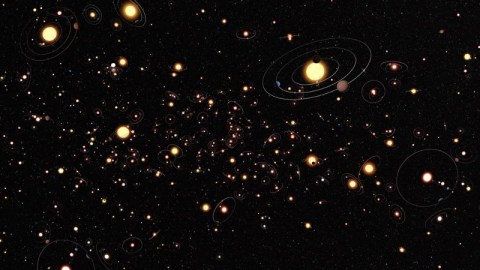
How two seemingly distinct exoplanet systems turned out to be related.
Practically every star in the Milky Way has a similar origin story. At some point in the past, a molecular cloud of gas — mostly hydrogen and helium but enriched with the heavy elements from prior generations of stars — began to contract under its own gravity. As that cloud contracts, it radiates heat away, becoming dense enough in places that mass begins to accumulate in a runaway process. After millions of years, proto-stars and then full-fledged stars begin to form, and the race is on: between gravity, trying to grow and form as many stars as possible, and from the radiation from the newly formed stars, which works to boil the neutral matter off and prevent stars from forming further.
This process, as we understand it, is what occurs within star-forming regions, giving rise to new star birth and a familiar sight to astronomers: star clusters. These star clusters typically live only a short while, then dissociate, and the stars get randomly distributed throughout the galaxy. Tracing them back to their original nursery is often too complex a task, but recent advances may have just made that possible. For the first time, two stars housing exoplanets — Kepler 52 and Kepler 968 — have been traced back to their “parental” star cluster, and we’ve indeed confirmed it: these two mature systems are only just now leaving their childhood homes. Here’s how we know.
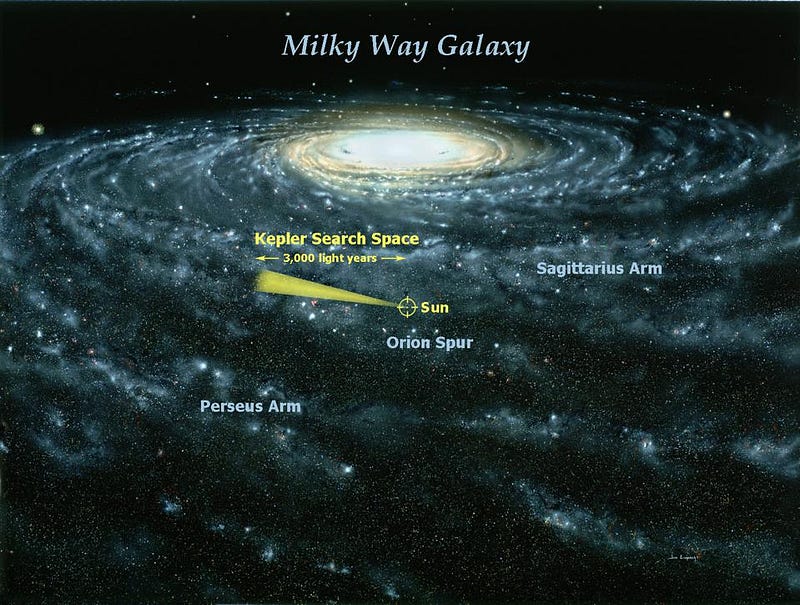
When the Kepler mission first began observing the sky, the plan was simple, straightforward, and brilliant. It would point its telescopic eye at the same region of space, over and over again, for years at a time. As it observed this area on the sky — located along one of the arms of our galactic plane — it collected data on more than 100,000 stars simultaneously. For most of these stars, their planets orbited out-of-the-plane that intersected with our line-of-sight. As long as the star wasn’t inherently variable and none of the planets passed in front of the star’s disk as they orbited, the brightness of each star would remain constant.
But with over 100,000 stars to view, even relatively rare configurations could be abundantly found. Even though only a small percentage of stars were aligned fortuitously, so that (at least) one or more of their inner planets did pass in front of the star’s disk during its orbit from our perspective, we could identify a periodic dimming of the star. If this transit event occurred repeatedly and could be followed up with a complementary measurement, this interesting event could get promoted first to an exoplanetary candidate and then to a confirmed exoplanet.
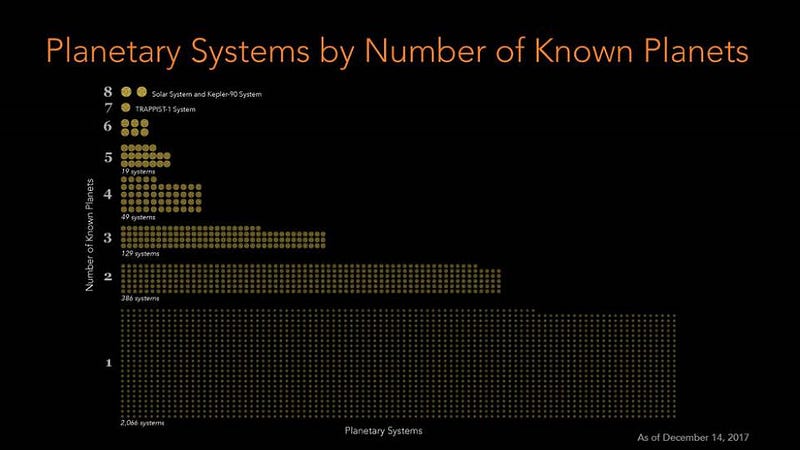
Since its launch just over a decade ago, NASA’s Kepler discovered thousands of stars that housed one or more planets around it, with our current exoplanet total now exceeding 4,000 total planets. Two of these stars, in nearly the same region of the sky, seemed to be both typical and unremarkable in many similar ways: Kepler 52 and Kepler 968.
Kepler 52 has three known exoplanets around it, with the farthest one about half as far away as Mercury is from our Sun. Kepler 52, the star, is less massive and luminous than our Sun (about 54% as massive), and is the most massive kind of M-type star: right on the border between what makes a red dwarf, which will never fuse helium into carbon, and a K-type star, which will someday get there.
Kepler 968, on the other hand, has two known exoplanets that are in extremely tight orbits: only separated from their parent star by about ~10% of the Sun-Mercury distance. Kepler 968 is a bit more massive of a star, at 76% the mass of our Sun, and is a full-fledged K-class star: between the Sun-like G-type and the low-mass M-type.
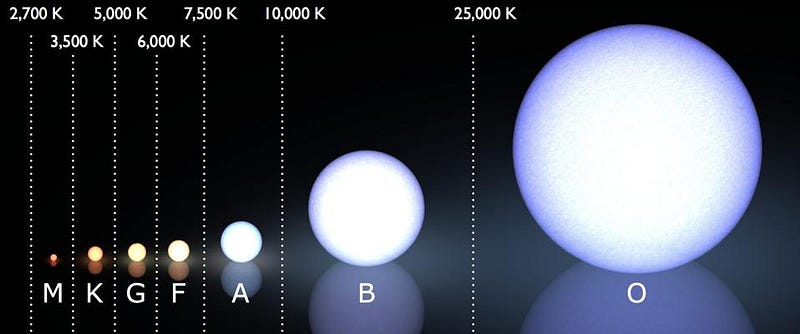
These two stars, on the surface, seem unrelated to one another. They’re in nearby but distinct parts of the sky, they’re both a little more than 1,000 light-years away, and their ages, based on data from the European Space Agency’s Gaia mission, are extremely poorly constrained. These are both evolved stars, with indications that:
- they’re fusing hydrogen into helium in their cores,
- they only have fully-formed planets around them, not protoplanetary disks or other rich sources of dusty debris,
- and that their solar systems are mature, like our own.
If this were all we knew about these stars, we’d probably call it a day. Like many stars, they appear to have a system of planets around them, aren’t associated with any sort of star cluster, and have lots of uncertainties about their properties. Sure, we know each of the star’s masses and the orbital properties of the planets, but beyond that, it’s very difficult to infer things like their ages, their rotation periods, their metallicities, or how they’re moving relative to us and one another; the Kepler data, and even the follow-up data to confirm the existence of these exoplanets, doesn’t tell us all that much on their own.
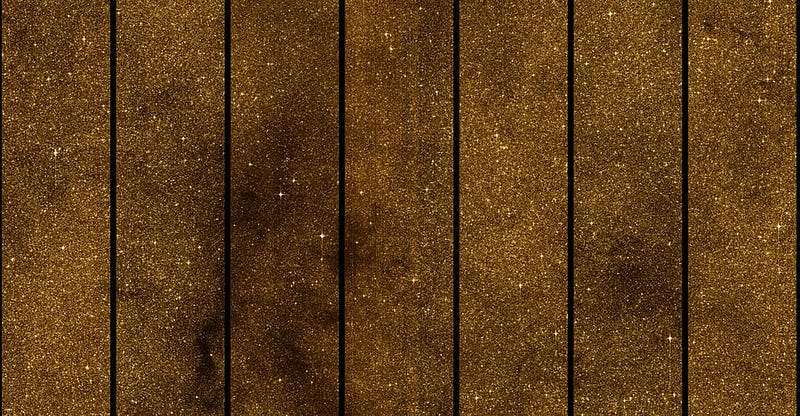
However, these stars and their planetary systems haven’t only been observed by Kepler, but also from NASA’s TESS — the Transiting Exoplanet Survey Satellite — and from the Zwicky Transient Facility. With the combined data from three separate observatories, scientists were able to measure two very important properties about these stars:
- their rotation rates, determining how quickly each star takes to spin a complete revolution about its own axis,
- and the mass of the parent star, inferred by the properties of the orbiting planets.
These two pieces of information, combined, are tremendously interesting. The reason is straightforward: when stars are born, they rotate rapidly; it only takes a few hours to a few days for them to complete a full spin of 360°. However, over time, their magnetic fields cause their rotation rate to slow. If you’re born spinning rapidly, your magnetic field will slow you down more quickly. Also, if you’re a less massive star, your rotation rate lengthens more easily than if you’re more massive, which leads to an interesting phenomenon. Once your set of newborn stars is more than about 100 million years old, all the stars more massive than a certain threshold will display a nice, clean correlation between their masses and their rotation rates, with the specifics of that correlation highly dependent on the ages of the stars. As star clusters age, the more massive stars evolve, leaving only the less massive, less luminous members behind.
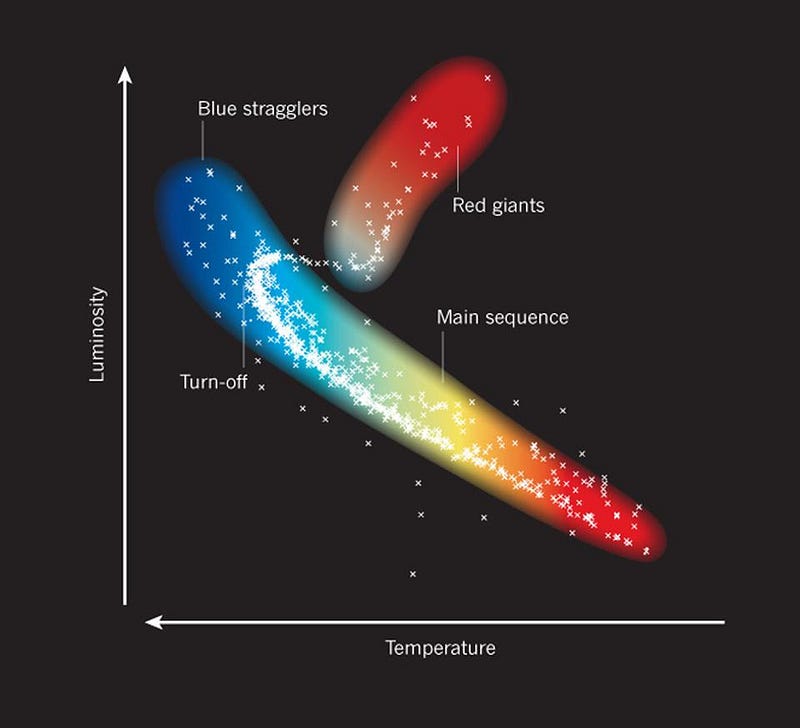
At the same time, the last few years have yielded a relative surprise for astronomers as far as stars go. The ESA’s Gaia mission, designed to exquisitely measure the properties of more than a billion stars in our galaxy — how far away they are, their positions, their motions over time, their colors, their parallaxes, etc. — started to find star clusters with properties we’ve never seen before. Whereas the star clusters we’re most familiar with are either tight, compact, roughly ball-like collections of stars, Gaia discovered more than 1,000 new star clusters that are instead spread out over wide areas: as though they collapsed along filaments, rather than from ellipsoidal clouds of gas.
One of those new star clusters is known as Theia 520, whose stars are approximately 350 million years old. All told, the cluster itself is around 1,200 light-years away, but it’s elongated and widely spread out over space. Instead of compact and rich, it’s diffuse and sprawling. For that reason, it’s a terrible object to view with your eyes through a telescope. However, it is a sparkling example of this new type of cluster. Like many of the new ones, it has tidal tails, diffuse distributions, and features that appear to be driven by evolution. Some of these clusters, in fact, are so elongated that they span over a thousand light-years from end-to-end. Theia 520 is one of them, and these two stars, Kepler 52 and Kepler 968, are actually found on the extreme outskirts of the cluster itself.
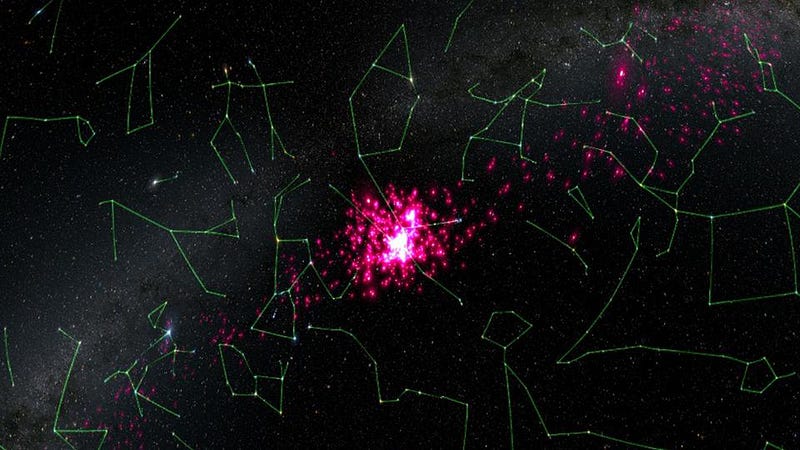
It’s only because of the fact that we have so many new, cutting-edge observatories that all complement one another that we were able to synthesize this picture together so holistically.
- From ESA’s Gaia and its view of individual stars, we can get astrometry and photometry data, teaching us the star’s position, color, and a little bit about its motion.
- From Kepler, TESS, and the Zwicky Transient Facility, we can determine the orbits of the planets around the star, the rotation data of the star, and the mass of the star in question.
- And from the Keck telescope, the Sloan Digital Sky Survey’s APOGEE instrument, and China’s LAMOST telescope, we can get spectroscopic data, which helps inform us about the star’s metallicity (how many and what kinds of heavy elements are inside) and other detailed stellar properties.
In the modern era of large data sets, one helpful features is that all of these various observatories have already had their data digitized, and it’s all freely and publicly available to researchers anywhere in the world. From this position, a team of researchers led by Dr. Jason Curtis at Columbia University were able to draw some extraordinary conclusions.
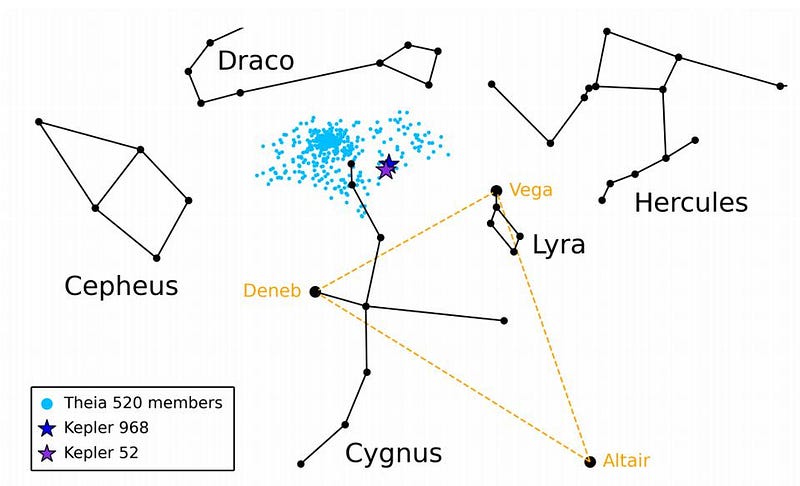
First off, Kepler 52 and Kepler 968 are, in fact, part of a much larger, enormous, but diffuse star cluster: Theia 520. If they formed from the same cloud of gas, you’d expect them to all:
- have the same ages to within only a few million years,
- to follow the same mass vs. rotation period correlation,
- and to all have approximately the same heavy element content, or metallicities, as one another.
This is precisely what we see. Theia 520 consists of about ~400 stars, strewn about across a large area of the sky. The metallicities of the stars are thus far difficult to obtain, but for the seven different stars where metallicity measurements exist, they’re all consistent both with one another and with having a comparable heavy element fraction to our own Sun. And, as we’ve already seen, they all follow the mass-rotation period correlation we showed earlier, with Kepler 52 and Kepler 968 matching Theia 520 extremely well. This leaves one conclusion as the overwhelmingly favored one: these two star systems, the Kepler 52 and the Kepler 968 systems, are actually siblings of one another.
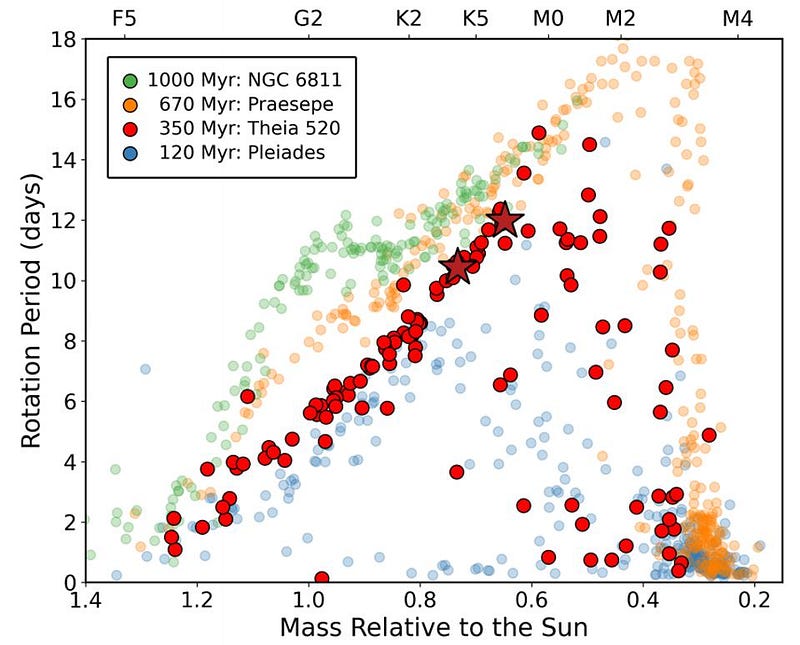
This is pretty extraordinary! With the rotation periods and masses measured for 130 separate stars in Theia 520 — about a third of the identifiable stars inside — we were able to pin down the ages of the stars inside to extreme precision: they’re 350 million years old, with an uncertainty of only ~50 million years on that figure. This makes Kepler 52 and Kepler 968 incredibly valuable systems, as young planetary systems appear to be rare.
In fact, by observing a number of the stars inside Theia 520, we find a remarkable happenstance: the stars within Theia 520 that are home to detected planets are preferentially located on the outskirts of this diffuse cluster, while the stars located closer to the cluster center don’t appear to have planets. While this is just one such cluster with only a few hundred stars, making it difficult to draw broad conclusions, it certainly is suggestive that there might be a greater pattern at play here.
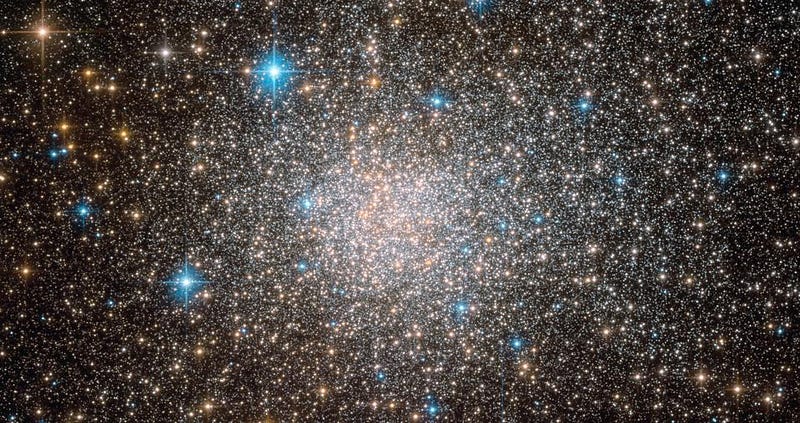
As Dr. Curtis put it, “This is only the beginning. Gaia has shown that the solar neighborhood is teeming with [these diffuse stellar] populations, some stretching hundreds of light-years in space in elongated patterns, others arranged in more amorphous distributions, and some that are dense clusters with halos and tails. Like Theia 520, some of these groupings are home to already known planets, with many more waiting to be discovered with the ongoing TESS survey.”
By measuring the rotation rates and masses of stars, we can determine their ages to excellent precisions. This new research takes us a step further: into territory where we can identify large, elongated, diffuse star clusters, even ones spread out across more than a thousand light-years, that we can confidently trace back to a single origin in time. It’s proof that we can identify which stars, even stars separated by great distances, were born together, from the same star-forming region. And it offers hope, for perhaps the first time, that if we can gather enough high-quality data, even 4.5 billion years after the fact, we just might be able to someday find our long-lost stellar siblings as well. With the power of massive data sets, open science, a lot of technique and a little luck, we might soon discover that we’re a lot less lonely in the Universe than we’ve ever imagined.
Starts With A Bang is written by Ethan Siegel, Ph.D., author of Beyond The Galaxy, and Treknology: The Science of Star Trek from Tricorders to Warp Drive.





